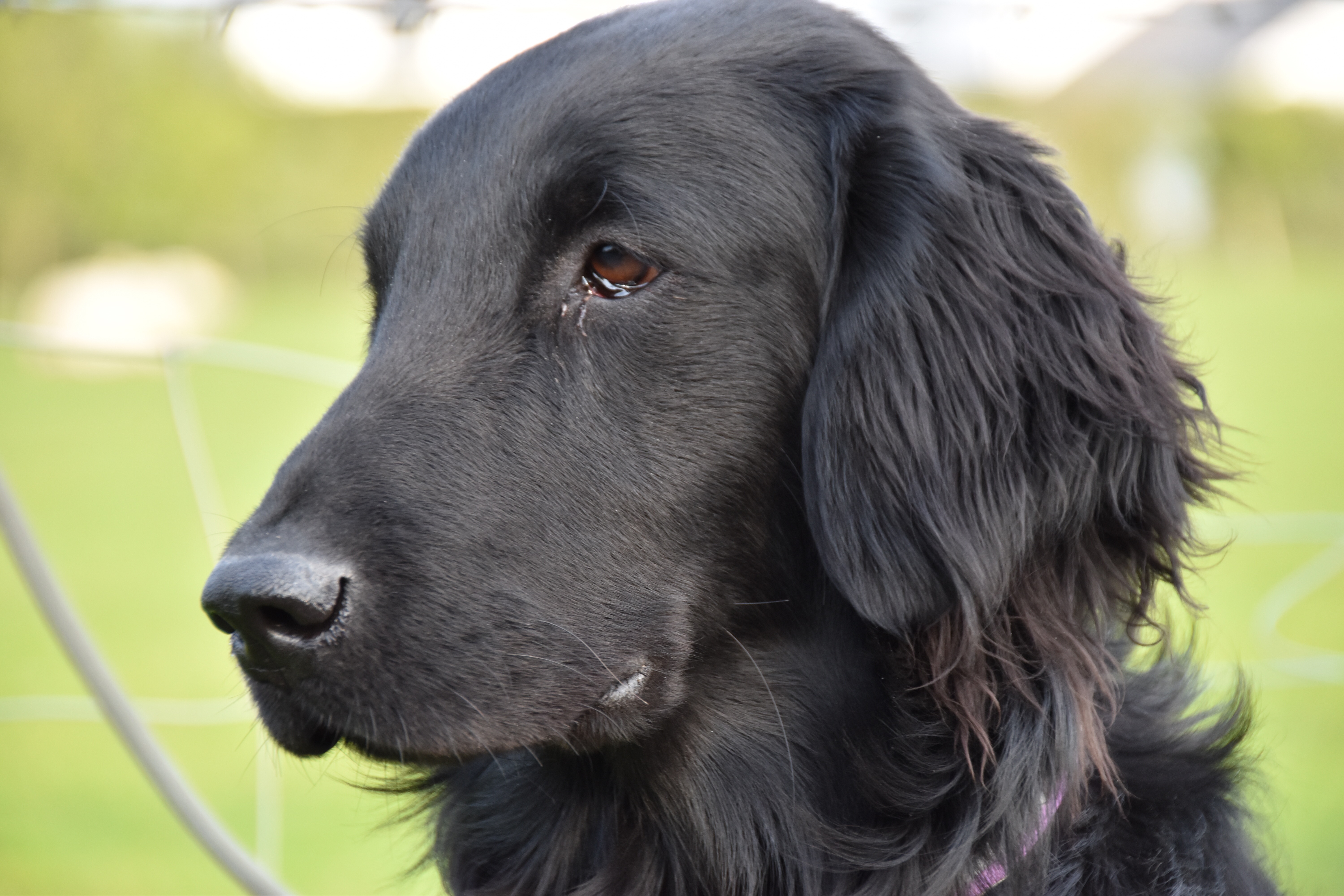The Komondor – Profile – Health/Medical – Information you can use
The Komondor
Plural = Komondorok
The” Hungarian Sheepdog”
Dog breed info
Komondor
Weight Male: 90 — 130 lbs
Weight Female: 60 — 95 lbs
Height: 26” — 36”
AKC Rank 2008 #149
Lifespan: 10—12 yrs
Group Working
Origin:Hungary
- Breeders And Rescue Groups
- Dog Health, Dog Illness, Medical Problems
Dog Breed Info – The Komondor
A Komondor Puppy. The cords come at around 2 years of age.
Breed Overview
Origin: Ancient times. Original function: Sheep guarding. Today: Sheep guarding, Companion. Colors: White.
A long time back when the Huns came to Hungary, they arrived with large, long-legged Owtcharka, which eventually became the origin of the Komondor. The earliest documentation of the breed goes back to perhaps the 1550’s but that’s not when the breed originated. This breed worked in the fields guarding sheep and cattle without human supervision. It was a rugged, hardy dog that worked effectively without supervision, staving off coyote, fox, bear and marauders of all kinds.. This dog continued the guardian work right into the twenty first century. Komondorok (plural) arrived in the United States in 1933. It was registered by the AKC in 1937 in the Working group. These dogs served in WWII guarding military assets but so many were killed doing their duty in Europe that the breed nearly vanished. A concerted effort by breeders revived the breed to an extend but the extreme difficulty caring for the dog’s coat kept the dog from growing too much. The result is that this dog is today an uncommon and somewhat rare breed except for in Hungary. The breed is still used today in the USA protecting flocks, mainly in the Western States.
The Komondor is an independent thinker and can be stubborn. They are very trainable, but may hold back if they don’t see the need to obey a command. Start training when a 4 or 5 week old puppy and keep at it all through life, never letting down. Use clicker training and positive reinforcement for difficult dogs like this. Learning is not the problem, but attitude can be.
Crate Training
Want to crate train your Komondor puppy? It’s easy and if you’re interested, take a look and you’ll see what to do. Crate training your puppy will save many headaches and problems.
Potty Training
The Komondor puppy can be difficult to house train, potty train, toilet train, housebreak or whatever you want to call it. If you have a puppy, decide if you want to crate or paper potty train it. For the best results, we have a page at Crate vs Paper Potty Training which will help you decide and from there you can get all the information you need to get the job done. Always praise the pup profusely when she goes potty in the RIGHT PLACE so she knows she has done a good thing. Either method will work for this breed.
If you have an older dog, take the dog outside every two hours until she gets the idea which door leads to her potty area. Older dogs catch on to the potty or housebreaking pretty fast once they are shown what to do. Top
The Komondor is an intelligent, alert and very serious natural-born guard dog. This is a no-nonsense animal that is mostly work and no play with other dogs and strangers. He will protect his family, the children in the family, the house and any livestock that may belong to the family. This breed MUST be heavily socialized starting very young, at 4 or 5 weeks and continued throughout his life. Strict obedience training along with heavy socialization is absolutely necessary. The dog, by nature, tends to dominate everything and everybody in his world so he must be controlled at all times. We’re talking about a dog that can ward off wolves, coyote and bear. The Komondor must always be handled by, and live with, alphas-pack-leader type people that can set the rules of the house and maintain dominating control over the dog.
In return, the dog will be exceptionally protective of the family, quite affectionate, somewhat playful and in general a pretty good house pet as long as strangers and stray dogs don’t show up..
This breed is definitely not for owners that can be dominated easily.
If you happen to get a Komondor with a separation anxiety problem, that can be dealt with by investing a few hours of work on your part and some “tough love.”
Friendly Toward Other Dogs
Wary of strange dogs, even very aggressive. This breed can be vicious.
Friendly Toward Other Pets
Has been known to accept house pets, especially if raised with them and heavily socialized with them. Introduce other dogs ihn house with walks on common ground. Introduce the house cat gradually with an hour a day of exposure with the cat in a crate, and then take the cat out and let them mingle together in a room, closely supervised. It CAN work.
Friendly Toward Strangers
May be aggressive toward strangers. Reserved at best. Very territorial and protective. Not good to have strangers walking around the property or down the sidewalk.
Playfulness
Moderately playful dog. Give him interesting games including fetching balls and he will romp with the kids.
Quite affectionate with family members. While an independent guardian of flocks, this dog still finds time to be loyal, devoted and affectionate with his family of humans as long as they are the pack leaders and he/the dog is the submissive one.
Generally, once the Komondor understands the children are PART OF THE FAMILY, he will accept them as part of his “flock” that he must guard just as if they were sheep. The dog must learn early on that the kids are not going to be a threat and hurt him or the rest of the family.
In some cases, they should be RAISED with the children. If socialized with children the dog will be more tolerant and playful. “Socialized” means the dog is handled and played with extensively as a growing puppy so he learns that kids are NOT a threat and will not harm him.
This dog may misunderstand same roughhousing by kids and view play-wrestling and other physical rough and tumble activity by neighboring children as attacks on “his own flock of children” and attack the neighboring kids as if they were predators.
Good with Seniors over 65?
No. Not my first choice fore a senior.
Living environment
House with a large fenced yard and doggie door, farm or ranch.
Can NOT stand warm weather. Has too heavy a coat and can’t go swimming to cool off. Top
Energy level
Moderate energy. Rate this about 6 bars out of 10.
Moderate Two long walks OR some jogging OR some active games of fetch or other activities such as obedience training sessions. Swimming is a bad idea because it take the dog a full day to dry off.
Excellent watchdog. Loves to bark anyway.
Excellent guard dog.
Normally calm, the Komondor is totally fearless and extremely ferocious when necessary.
Non shedding. Good for allergy suffering people.
The cords must be hand-separated frequently. The coat hold dirt; grooming is time consuming and drying takes up to a day. You can clip the coat if you don’t mind losing some of the dog’s original appeal. Top
-
The book at the left is an Owners Guide. It a comprehensive hardcover book that covers all you need to know about the Komondor.
In the event you decide to go looking for Komondor puppies, be SURE to find reputable breeders that really know what they are doing. Be sure the puppy has been VERY well socialized and started in obedience training.
Komondor Breeders with puppies for sale. NOTE – At the time I am writing this, the website is showing only 4 breeders for this dog, one of which is in the USA. Try an online search for breeders, puppies or clubs.
Komondor Rescue
In the event you are seriously considering the adoption of an older dog and are looking for a Komondor Rescue group in your state, trey this link that might help:
Petfinder – Dog Rescue – (Nationwide) At the time I am writing this, Petfinder is showing only 5 dogs available to adopt in the entire USA.
That may be enough, but search online for Komondor Rescue Groups, Clubs or kennels.
This is basically a healthy breed. Don’t let the list below scare you! Your own dog will probably never have ANY of these problems. These are dog illness and medical problems this breed is prone to that have been listed by various veterinarians at different times over the past decade or so and some pertain to puppies and very young dogs that a breeder would deal with.The information contained herein has been gathered from numerous books by veterinarians and is intended as general information only. Every dog and situation is different. You must see your vet. Our information is for general interest only and not intended to replace the advice provided by your own veterinarian.
-
Hip dysplasia – Hind end limping, hind/back leg acts lame, can’t move, weak legs. Wear and time causes the femur to fit poorly into the pelvic socket with improper rotation causing the Plott great pain, weakness and difficulty walking. You may notice the dog “hopping”” like a rabbit when running plus hesitating to climb stairs, all due to pain in the hind quarters. The problem actually starts as a very young puppy with an abnormal formation of the hip joint and grows progressively. A vet can locate this with a diagnostics test.
Other health problems could occur with your Komondor. If you notice any problems with your dog, take it to the vet immediately. This website is for general information only and is not intended to, in any way, be a medical guide.
Copyright © 2008 – 2016 All Rights Reserved Do not copy or reproduce any portion of this website without our consent. dog-adoption-and-training-guide.com

